-
 Bitcoin
Bitcoin $78,311.0860
-4.96% -
 Ethereum
Ethereum $1,554.1389
-11.52% -
 Tether USDt
Tether USDt $0.9994
-0.01% -
 XRP
XRP $1.8690
-9.69% -
 BNB
BNB $553.2270
-4.73% -
 USDC
USDC $0.9999
0.00% -
 Solana
Solana $106.1287
-7.45% -
 Dogecoin
Dogecoin $0.1469
-8.94% -
 TRON
TRON $0.2271
-5.15% -
 Cardano
Cardano $0.5723
-8.25% -
 UNUS SED LEO
UNUS SED LEO $8.9644
-0.63% -
 Toncoin
Toncoin $3.0468
-7.40% -
 Chainlink
Chainlink $11.2739
-7.40% -
 Stellar
Stellar $0.2297
-7.44% -
 Avalanche
Avalanche $16.2885
-4.13% -
 Shiba Inu
Shiba Inu $0.0...01126
-4.87% -
 Sui
Sui $1.9914
-4.47% -
 Hedera
Hedera $0.1438
-6.57% -
 MANTRA
MANTRA $6.2867
1.46% -
 Polkadot
Polkadot $3.5764
-7.71% -
 Bitcoin Cash
Bitcoin Cash $272.7745
-6.40% -
 Dai
Dai $0.9998
-0.02% -
 Litecoin
Litecoin $70.1706
-10.92% -
 Ethena USDe
Ethena USDe $0.9986
-0.04% -
 Bitget Token
Bitget Token $4.0702
-6.45% -
 Pi
Pi $0.5891
-5.30% -
 Hyperliquid
Hyperliquid $10.8343
-2.83% -
 Monero
Monero $195.2009
-7.56% -
 Uniswap
Uniswap $5.1005
-8.71% -
 OKB
OKB $50.7194
-5.53%
What is EdDSA (Edwards Curve Signature)?
EdDSA, a modern cryptographic signature scheme, offers high security and efficiency, making it popular in cryptocurrencies like Monero and Cardano.
Apr 07, 2025 at 05:15 pm
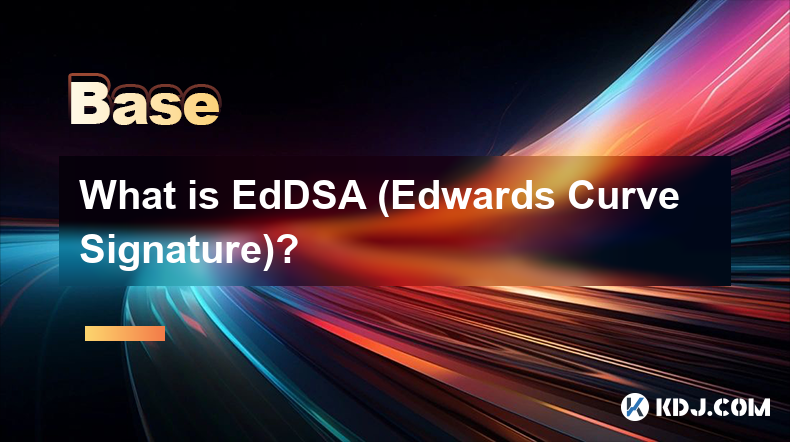
What is EdDSA (Edwards Curve Signature)?
EdDSA, or Edwards-curve Digital Signature Algorithm, is a modern cryptographic signature scheme that offers high security and performance. It is based on elliptic curve cryptography and specifically utilizes Edwards curves, which are known for their efficiency and security properties. EdDSA is designed to be simpler and more efficient than other signature schemes, making it a popular choice in various applications, including cryptocurrencies.
h3 The Basics of EdDSA
EdDSA is a type of digital signature algorithm that allows a user to sign a message with their private key, and others to verify the signature using the corresponding public key. The algorithm is based on the difficulty of certain mathematical problems related to elliptic curves, which ensures the security of the signatures. EdDSA is particularly noted for its speed and simplicity, making it an attractive option for applications where performance is critical.
h3 How EdDSA Works
The EdDSA algorithm involves several key steps in the process of signing and verifying a message. Here's a detailed look at how it works:
Key Generation: The first step is to generate a key pair. The private key is a random number, and the public key is derived from the private key using the Edwards curve. The specific curve used in EdDSA is typically Curve25519 or Ed25519.
Signing a Message: To sign a message, the user combines the message with their private key to produce a signature. This involves hashing the message and using the private key to perform operations on the elliptic curve.
Verifying a Signature: To verify a signature, the recipient uses the public key and the message to check if the signature is valid. This involves similar operations on the elliptic curve, but using the public key instead of the private key.
h3 Advantages of EdDSA
EdDSA offers several advantages over other digital signature algorithms, which contribute to its popularity in the cryptocurrency space:
High Security: EdDSA is designed to be secure against various types of attacks, including side-channel attacks and quantum computer attacks. The use of Edwards curves provides a high level of security with a relatively small key size.
Efficiency: EdDSA is known for its fast performance, both in terms of signing and verifying signatures. This makes it suitable for applications where speed is important, such as in blockchain transactions.
Simplicity: The algorithm is relatively simple to implement and understand, which reduces the likelihood of implementation errors. This simplicity also makes it easier to audit and verify the security of the implementation.
h3 EdDSA in Cryptocurrencies
EdDSA is widely used in the cryptocurrency world due to its security and efficiency. Some notable examples include:
Monero: Monero uses EdDSA for its ring signatures, which provide enhanced privacy for transactions. The use of EdDSA helps ensure that the signatures are secure and efficient.
Cardano: Cardano employs EdDSA for its digital signatures, which are used to secure transactions on the blockchain. The efficiency of EdDSA helps improve the overall performance of the Cardano network.
Zcash: Zcash uses EdDSA as part of its zk-SNARKs (zero-knowledge succinct non-interactive arguments of knowledge) to provide privacy and security for transactions.
h3 Implementing EdDSA: A Step-by-Step Guide
Implementing EdDSA in a cryptocurrency application involves several steps. Here's a detailed guide on how to do it:
Choose the Curve: The first step is to choose the Edwards curve to use. The most common choice is Ed25519, which is widely supported and offers a good balance of security and performance.
Generate Key Pair: Use a cryptographic library to generate a key pair. The private key should be a random number, and the public key should be derived from the private key using the chosen curve.
Example in Python using the
cryptographylibrary:from cryptography.hazmat.primitives.asymmetric import ed25519private_key = ed25519.Ed25519PrivateKey.generate()
public_key = private_key.public_key()
Sign a Message: To sign a message, use the private key to generate a signature. The message should be hashed before signing.
Example in Python:
from cryptography.hazmat.primitives import hashes
from cryptography.hazmat.primitives.asymmetric import ed25519message = b"Hello, World!"
signature = private_key.sign(message)
Verify a Signature: To verify a signature, use the public key and the message to check if the signature is valid.
Example in Python:
from cryptography.hazmat.primitives import hashes
from cryptography.hazmat.primitives.asymmetric import ed25519message = b"Hello, World!"
try:public_key.verify(signature, message) print("Signature is valid")except:
print("Signature is invalid")
h3 Security Considerations for EdDSA
While EdDSA is considered secure, there are several important considerations to keep in mind when implementing it:
Randomness: The security of EdDSA relies on the randomness of the private key. It's crucial to use a secure random number generator to generate the private key.
Key Management: Proper key management is essential to prevent unauthorized access to the private key. This includes securely storing the private key and ensuring that it is not exposed during use.
Implementation Errors: Even though EdDSA is relatively simple, implementation errors can still occur. It's important to use well-tested cryptographic libraries and to thoroughly audit the implementation.
Frequently Asked Questions
Q: Can EdDSA be used with other types of elliptic curves?
A: EdDSA is specifically designed to work with Edwards curves, such as Ed25519. While it is theoretically possible to adapt the algorithm to other types of elliptic curves, doing so would require significant modifications and could potentially compromise the security and efficiency of the algorithm.
Q: How does EdDSA compare to ECDSA in terms of performance?
A: EdDSA generally offers better performance than ECDSA, both in terms of signing and verifying signatures. EdDSA is designed to be faster and more efficient, making it a preferred choice for applications where performance is critical.
Q: Is EdDSA resistant to quantum computing attacks?
A: EdDSA is considered to be more resistant to quantum computing attacks than some other signature schemes, but it is not completely immune. While the use of Edwards curves provides a higher level of security, the advent of sufficiently powerful quantum computers could potentially break the security of EdDSA. Research into post-quantum cryptography is ongoing to address this concern.
Q: Can EdDSA be used for other cryptographic purposes besides digital signatures?
A: EdDSA is primarily designed for digital signatures, but the underlying elliptic curve cryptography can be used for other purposes, such as key exchange and encryption. However, for these other applications, different algorithms and protocols would typically be used.
Disclaimer:info@kdj.com
The information provided is not trading advice. kdj.com does not assume any responsibility for any investments made based on the information provided in this article. Cryptocurrencies are highly volatile and it is highly recommended that you invest with caution after thorough research!
If you believe that the content used on this website infringes your copyright, please contact us immediately (info@kdj.com) and we will delete it promptly.
- Gold prices climb close to their all-time high levels as US President Trump's April 2-bound auto tariffs heightened global trade tensions.
- 2025-04-07 22:35:12
- BlockDAG (BDAG) Discussions Are Shifting Away from Charts and Moving Toward Results
- 2025-04-07 22:35:12
- Peter Brandt Predicts a 43% Drop for XRP if the Coin Fails to Stay Above $1.9
- 2025-04-07 22:30:12
- The Crypto Market is Entering a Delicate Phase, But The Last Dwarfs ($TLD) Presale Promises Huge Upside
- 2025-04-07 22:30:12
- Bitcoin, Ethereum, XRP, Solana, DOGE Price Plunge as US President Donald Trump's Global Tariff War Hits Cryptocurrencies
- 2025-04-07 22:25:12
- The leading cryptocurrency projects measured by Total Value Locked (TVL) growth during the week indicate an uptrend.
- 2025-04-07 22:25:12
Related knowledge
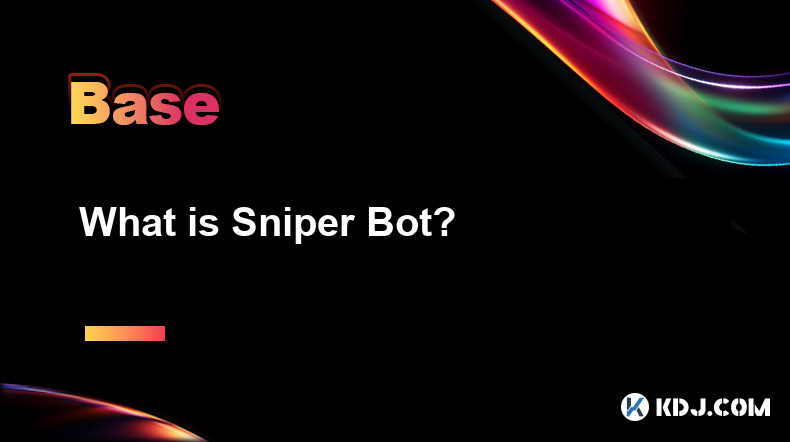
What is Sniper Bot?
Apr 07,2025 at 10:43pm
A Sniper Bot is a type of automated trading software used within the cryptocurrency market to execute trades at optimal times, often milliseconds before other traders. These bots are designed to take advantage of new token listings, price fluctuations, and other market opportunities to buy or sell assets quickly and efficiently. The primary goal of a Sn...
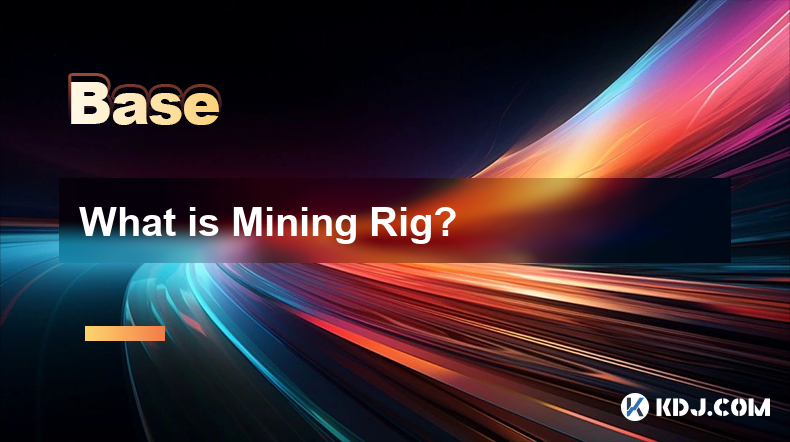
What is Mining Rig?
Apr 07,2025 at 11:08pm
A mining rig is a specialized computer system designed specifically for the purpose of mining cryptocurrencies. Mining, in the context of cryptocurrencies, refers to the process of solving complex mathematical problems to validate transactions and add them to the blockchain. This process requires significant computational power, and a mining rig is buil...
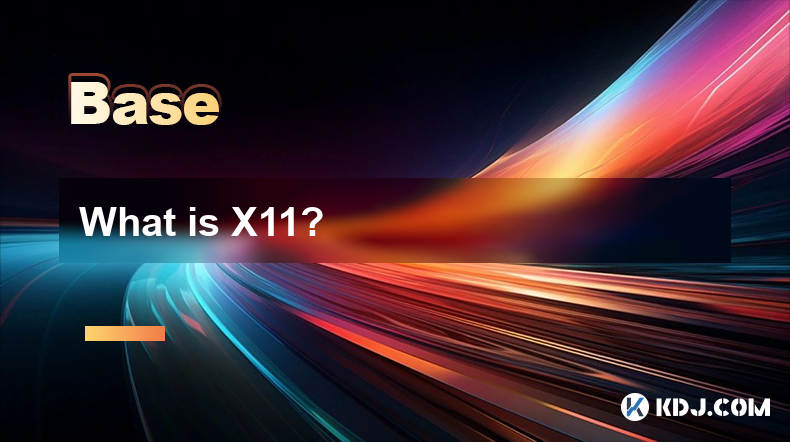
What is X11?
Apr 07,2025 at 09:22pm
What is X11? X11 is a cryptographic hash function used in various cryptocurrencies, most notably in the Dash cryptocurrency. It is designed to provide a high level of security and efficiency, making it a popular choice for blockchain networks. The X11 algorithm is unique because it uses a chain of 11 different hashing algorithms, which enhances its secu...
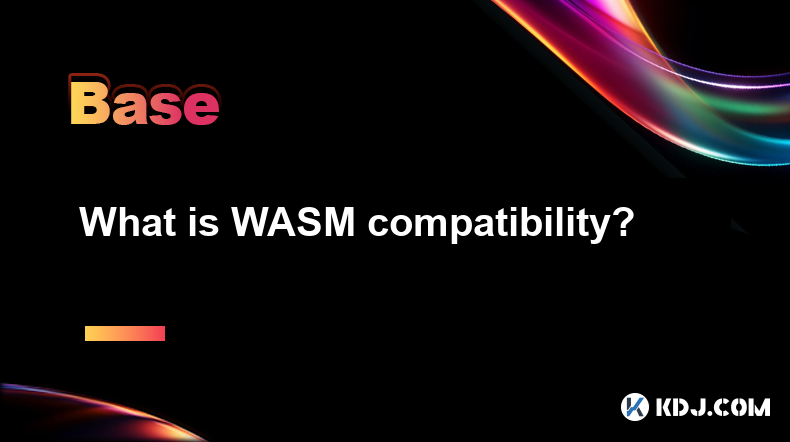
What is WASM compatibility?
Apr 07,2025 at 09:08pm
What is WASM Compatibility? WASM, or WebAssembly, is a binary instruction format for a stack-based virtual machine. It is designed to be a portable compilation target for programming languages, enabling deployment on the web for client and server applications. In the context of cryptocurrencies and blockchain technology, WASM compatibility refers to the...
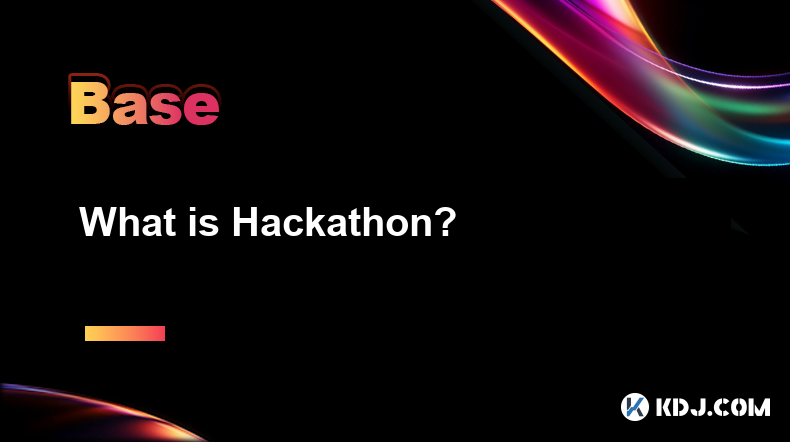
What is Hackathon?
Apr 07,2025 at 10:14pm
A Hackathon is an event where individuals or teams come together to collaborate intensively on software projects, often related to specific themes or challenges. In the context of the cryptocurrency circle, hackathons are frequently organized to foster innovation and development within the blockchain and crypto space. These events bring together develop...
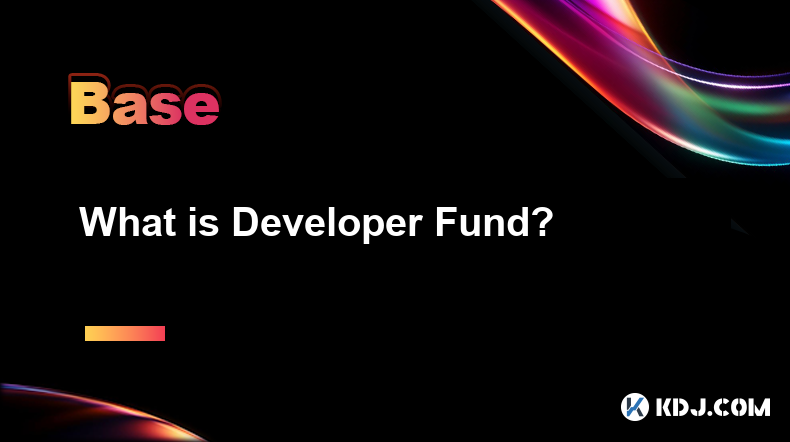
What is Developer Fund?
Apr 07,2025 at 08:21pm
A Developer Fund in the cryptocurrency ecosystem is a pool of resources, typically in the form of cryptocurrency, set aside to support the development and maintenance of a blockchain project. These funds are crucial for the growth and sustainability of blockchain networks, as they enable developers to work on improving the protocol, fixing bugs, and add...

What is Sniper Bot?
Apr 07,2025 at 10:43pm
A Sniper Bot is a type of automated trading software used within the cryptocurrency market to execute trades at optimal times, often milliseconds before other traders. These bots are designed to take advantage of new token listings, price fluctuations, and other market opportunities to buy or sell assets quickly and efficiently. The primary goal of a Sn...

What is Mining Rig?
Apr 07,2025 at 11:08pm
A mining rig is a specialized computer system designed specifically for the purpose of mining cryptocurrencies. Mining, in the context of cryptocurrencies, refers to the process of solving complex mathematical problems to validate transactions and add them to the blockchain. This process requires significant computational power, and a mining rig is buil...

What is X11?
Apr 07,2025 at 09:22pm
What is X11? X11 is a cryptographic hash function used in various cryptocurrencies, most notably in the Dash cryptocurrency. It is designed to provide a high level of security and efficiency, making it a popular choice for blockchain networks. The X11 algorithm is unique because it uses a chain of 11 different hashing algorithms, which enhances its secu...

What is WASM compatibility?
Apr 07,2025 at 09:08pm
What is WASM Compatibility? WASM, or WebAssembly, is a binary instruction format for a stack-based virtual machine. It is designed to be a portable compilation target for programming languages, enabling deployment on the web for client and server applications. In the context of cryptocurrencies and blockchain technology, WASM compatibility refers to the...

What is Hackathon?
Apr 07,2025 at 10:14pm
A Hackathon is an event where individuals or teams come together to collaborate intensively on software projects, often related to specific themes or challenges. In the context of the cryptocurrency circle, hackathons are frequently organized to foster innovation and development within the blockchain and crypto space. These events bring together develop...

What is Developer Fund?
Apr 07,2025 at 08:21pm
A Developer Fund in the cryptocurrency ecosystem is a pool of resources, typically in the form of cryptocurrency, set aside to support the development and maintenance of a blockchain project. These funds are crucial for the growth and sustainability of blockchain networks, as they enable developers to work on improving the protocol, fixing bugs, and add...
See all articles





















































































